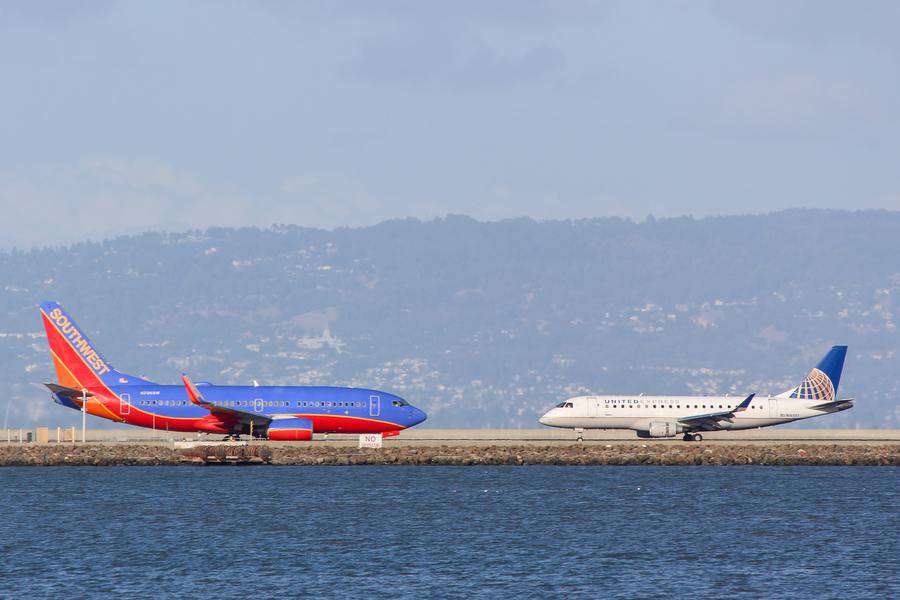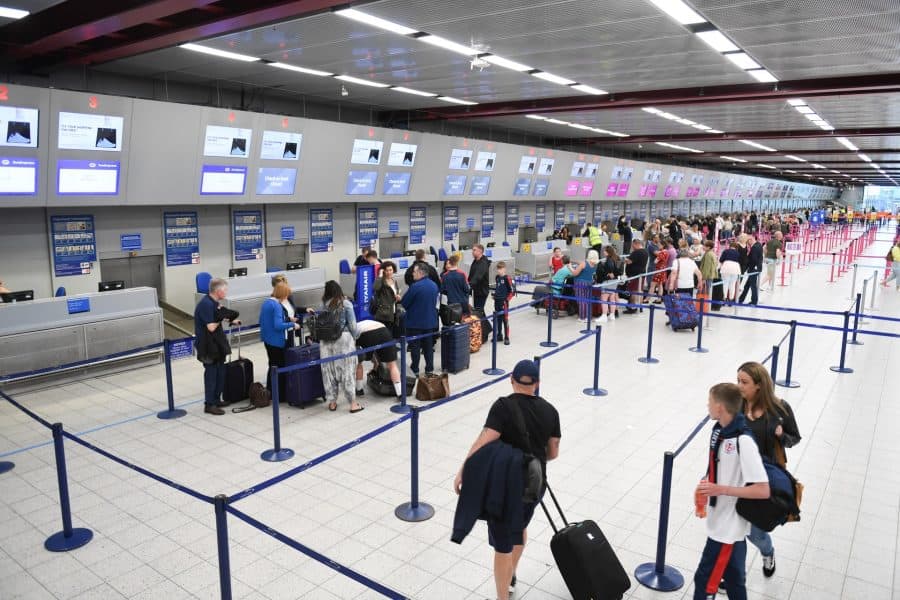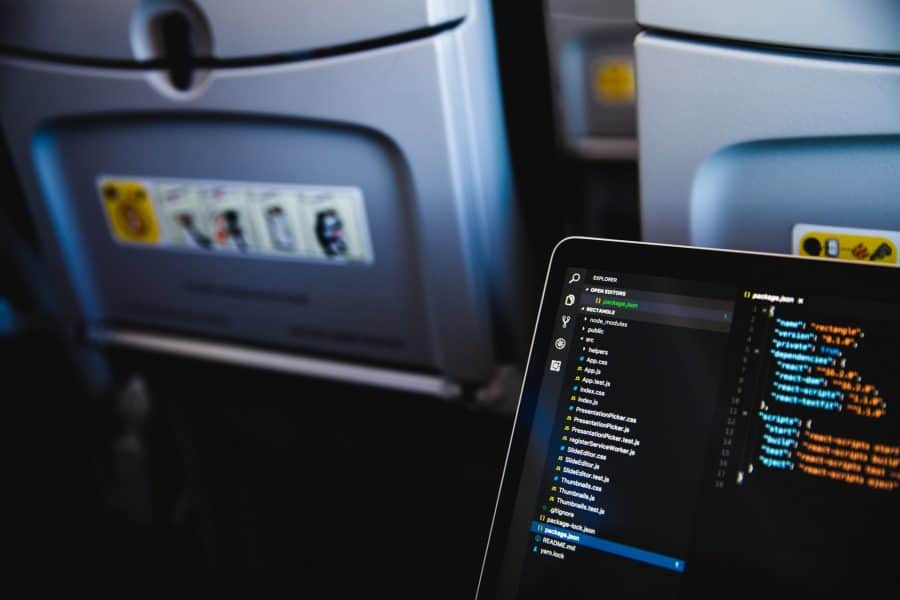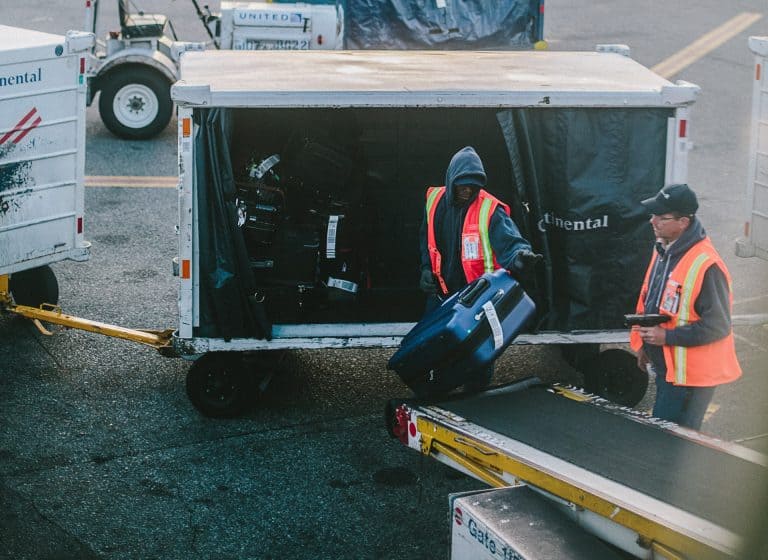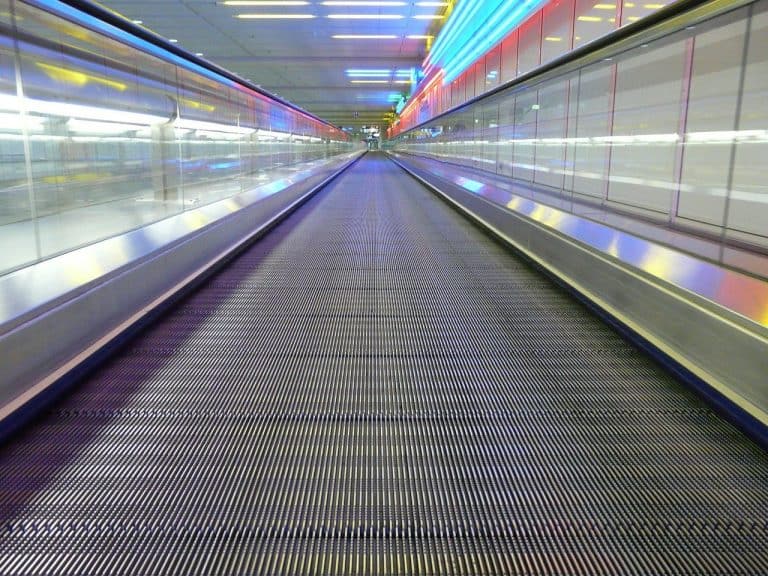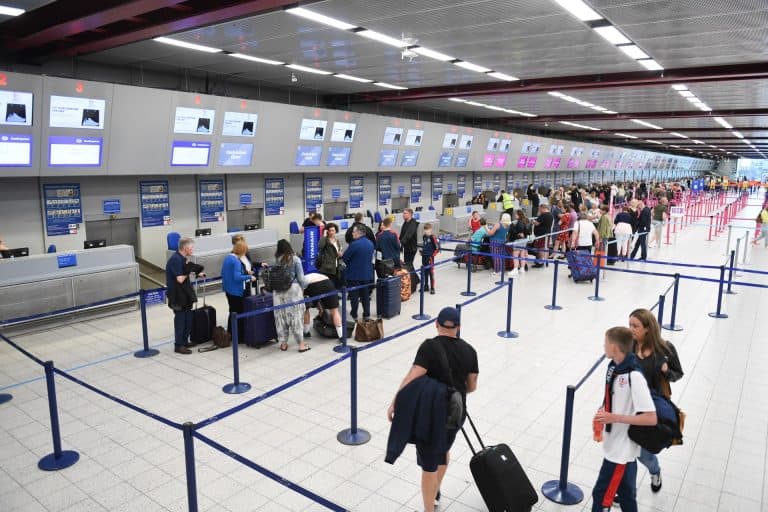Why Are So Many Airports Located Near Bodies of Water?
If you are a frequent flyer, you might have experienced a final approach over water all the way to the runway. This makes a lot of people think that most airports are next to a lake or ocean. Of course, this is far from the truth. However, a lot of them are indeed located next to some form of water. There are many different reasons why an airport may be located in that specific place and in this article we will explore the advantages, but also the dangers of having runways on a coastline.
Airports can be located next to water just for the reason of space on small, mountainous islands, to reduce noise pollution for people or make use of the so-called sea breeze. Other considerations have to be given to reclaimed land on marshland near coasts or man-made islands for the lack of space elsewhere.
A brief look into history
Many large cities and megacities are located in close proximity to some form of water. This may include a big river, canal, lake or the ocean itself. Back in the day, goods were transported mainly by ship as there were no trucks, trains or proper roads connecting every corner of a country. Even today a majority of worldwide trade is done by cargo ships. So having a river or the ocean close by, is a big advantage to boost local economies.
These early towns then developed into today’s big cities that eventually needed airports. However, as you can imagine, there are many different factors that need to be considered before answering where exactly to build one. For example, from what directions and routes may the airport be approached, what is the impact on the surrounding communities and of course, is there a vast area of suitable land? So, let?s have a closer look at some of the things we need to keep in mind when planning to build an airport.
Terrain – Is there anything in the way of planes?
If you plan to build an airport, one thing you must consider is the so-called obstacle limitation surface. This defines an area around the runway, where nothing can obstruct a safe arrival and departure of planes. These obstructions can be cranes, buildings, power lines, wind mills, trees or mountains, just to name a few.
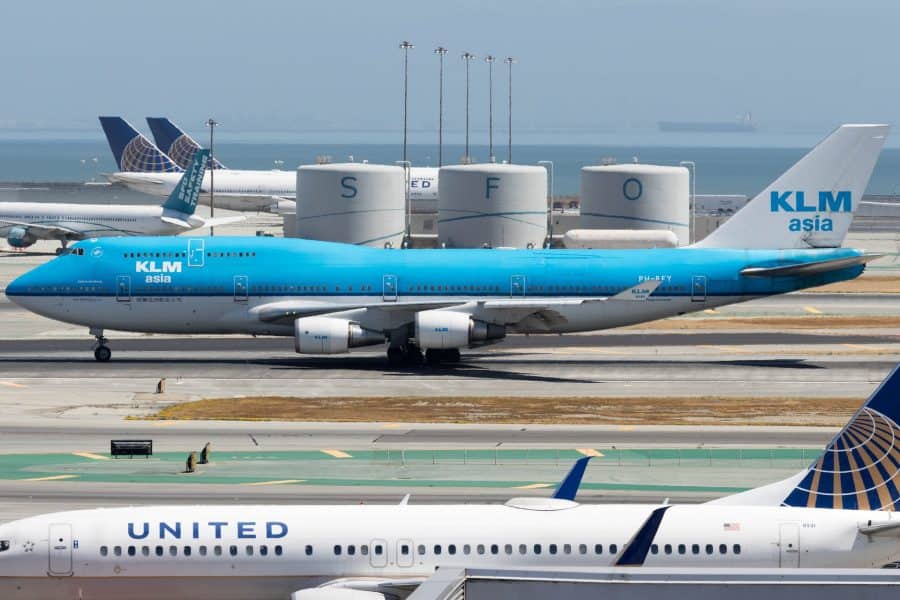
This problem alone narrows down the area where we can build an airport significantly. Over water nothing will restrict planes from taking off or landing, which is why you can find lots of airports next to the sea. On mountainous islands, such as the Canary Islands, you can find runways parallel to the ocean, as the mountains are inland. To avoid these obstacles, planes fly along the mountains and land on the flat part of the island just along the coastline.
Are there other safety reasons?
Again, there are lots of things to consider. If a plane has to abort a landing and go around, it has to be able to climb with a certain angle until it reaches a safe altitude. Over the ocean, this safe altitude is much lower than over a city with high buildings and therefore much easier to achieve.
One thing pilots train over and over again is the engine failure on take off. After a plane has reached the decision speed (V1), it has to take off, even if an engine fails. Fun fact: airplanes can actually fly and climb with only one of its engines. However, it takes more time and space with only half the thrust. Much like the go-around, taking off towards the ocean makes it easier to climb to a safe altitude, where the pilots can then calmly assess what to do next.
Both these examples demonstrate the high performance capabilities of airplanes and bring us to the next advantage. The higher the location of an airport is, the thinner the air will become, which decreases the thrust of engines and the amount of lift produced by the wings. As a result, longer runways are necessary for planes to take off. This means that on airports at sea level, planes need less runway length or thrust to take off and also can decrease the jet blast, noise and fuel needed.
What are the risks of airports next to the sea?
Of course, there are also disadvantages of building runways next to water. One of these are birds. Lots of birds live near coasts as these provide a good breeding ground. As we all learned from Sully, they can severely damage the engines and turn a big plane into a glider. Bird strikes are a considerable risk, but can be managed by scare tactics of airports, such as loud noises (for which sometimes guns are used) or other predators like trained hawks.
Another risk is overshooting the runway. This means that a plane cannot stop in time on the runway and continues beyond the concrete. If there is enough space left, it would just stop in the grass, sometimes with very little damage. But if there is water right at the end of the runway, it might fall into the water and cause considerable problems for passengers, crew and rescue teams. However, these incidents are very rare and new technology is being implemented to stop airplanes from overshooting runways. This is done through accurate landing performance calculations, where pilots can input all weather data and calculate how much runway they need to stop. In addition, some airports install a soft concrete at the end of the runway, where planes sink in and are stopped before going too far.
How does weather influence operations?
Coastal areas have special weather conditions that have an impact on the operations of the airport. One of these phenomena is the so-called sea breeze. This is a steady wind that blows from the sea to the land during the day time during spring and summer. As planes mostly take off and land into the wind, you can expect stable operations at that time as there is no need for runway changes as these usually happen with a change in wind direction.
Stable operations are important for an airport because it increases the capacity. When an airport has to change the runway direction there is a certain time (up to 15 minutes), where no plane can take off or land.
However, there are some disadvantages. During fall and winter, coastal areas are prone to fog. Fog is formed when a warm and moist air mass moves over relatively cold ground. This type of fog is called advection fog and is very common near warm ocean currents in colder climates. In the USA, you can observe this phenomenon often on the west coast, where warm water meets a cold coast.
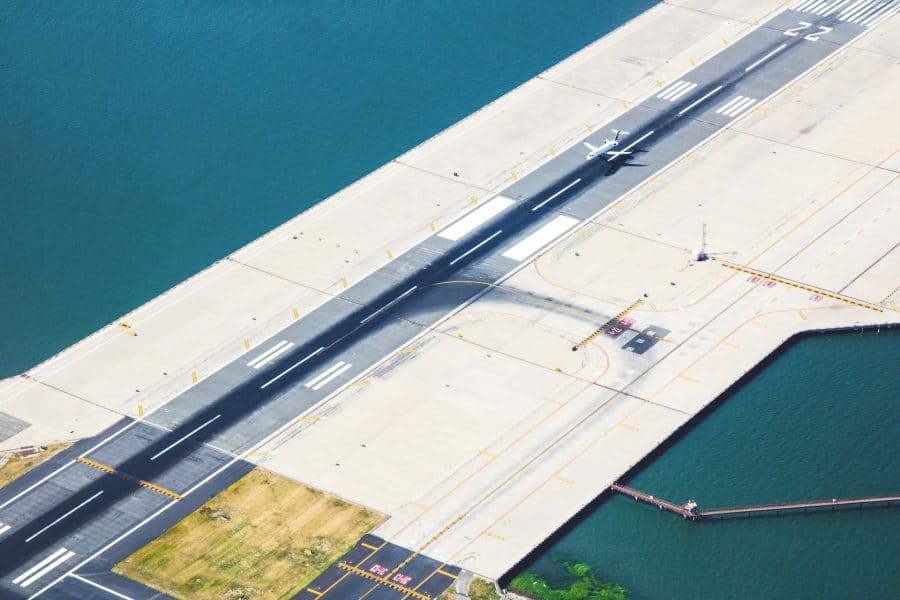
When an airport is covered in fog, the distance between planes taking off and landing has to be increased, consequently reducing the capacity. And this is why your flights are delayed when it is foggy.
Noise complaints
It comes to no surprise that planes produce a lot of noise. People living near airports obviously do not like to be disturbed by jet engines, especially at night. In order to keep the impact of noise to a minimum, very strict arrival and departure routes are published and must be followed precisely, unless there is an emergency.
These routes usually avoid more densely populated areas and sometimes even follow highways to drown out the sound of planes. As fish are not known to complain, a lot of these routes tend to run over water until planes have reached certain altitudes and no longer disturb the people on the ground.
In some countries like Germany, airports have to provide upgrades for houses impacted by the noise. This can be improvements to the roof, walls and windows to suppress the sound of planes. Hence, by reducing the number of affected people and houses, airports can save a lot of money.
What about land costs?
As airports are usually publicly funded and need a lot of land, the factor of cost is very important. In general, property next to the sea or lakes are more expensive than inland. But sometimes there simply is no choice when there is lack of space or unsuitable terrain in other places.
As always there are some exceptions to this rule. One famous example is John F. Kennedy International Airport in New York. JFK is built on former marshland. That land was relatively cheap, as it could not be used for many other things. Only a golf course and a hotel were located there before and replaced by the airport. Of course, some money had to be spent in order to prepare the ground to carry heavy loads (which we will explore next), but the vast area available close to the city were important factors on the decision to build in that place.
What are the engineering challenges?
For the purpose of building an airport, you need level and stable ground on a large scale. It not only has to be able to carry buildings, terminals, towers and streets, but also runways and taxiways that need to support big, heavy planes. As an example, airports had to reinforce runways, bridges and aprons to be able to facilitate the A380, when it was introduced.
However, you cannot find perfect land everywhere, so sometimes the ground needs to be stabilized, like in the example of JFK. In recent years a new challenge arose with entire international hubs being constructed on man-made islands. The most famous examples of this are Kansai International airport near Osaka, Japan and Hong Kong International Airport.
Due to lack of suitable space on land, these airports were constructed on artificial islands. This has the big advantage of simple approaches and take-offs with little to no noise pollution to people living in the vicinity, although this method significantly increases construction costs.
Another thing that needs to be mentioned is flooding. Airports next to a shore line need to be protected against flooding caused by heavy rainfall or stormy weather. The before mentioned Kansai airport was flooded in September 2018 by typhoon Jebi and had to stop operations for 2 days because the water was so high, it reached up to the planes? engines.
So you can see that airports are sometimes located near oceans or lakes for many reasons, but all come with certain challenges and advantages. On your next beach holiday you can try to notice some of the things mentioned in this article and see how it impacts your flight.
More from AirportNerd
The Complete Guide to Airplane Window Shade Etiquette
Picture this. You are sitting in the most undesired seat on the airplane, the middle…
Why Do Airlines and Airports Use 24-Hour Time?
The culprit of many missed flight connections: distinguishing between 12-hour and 24-hour clocks. While most…
Why Are Airports Named After U.S. presidents?
Donald Trump has been in the news for wanting to rename Palm Beach International Airport…
Why Do Laptops Get Special Attention at Airport Security?
?Shoes off, laptops out, liquids in zip lock bags, all in separate trays!? Frequent flyers…

